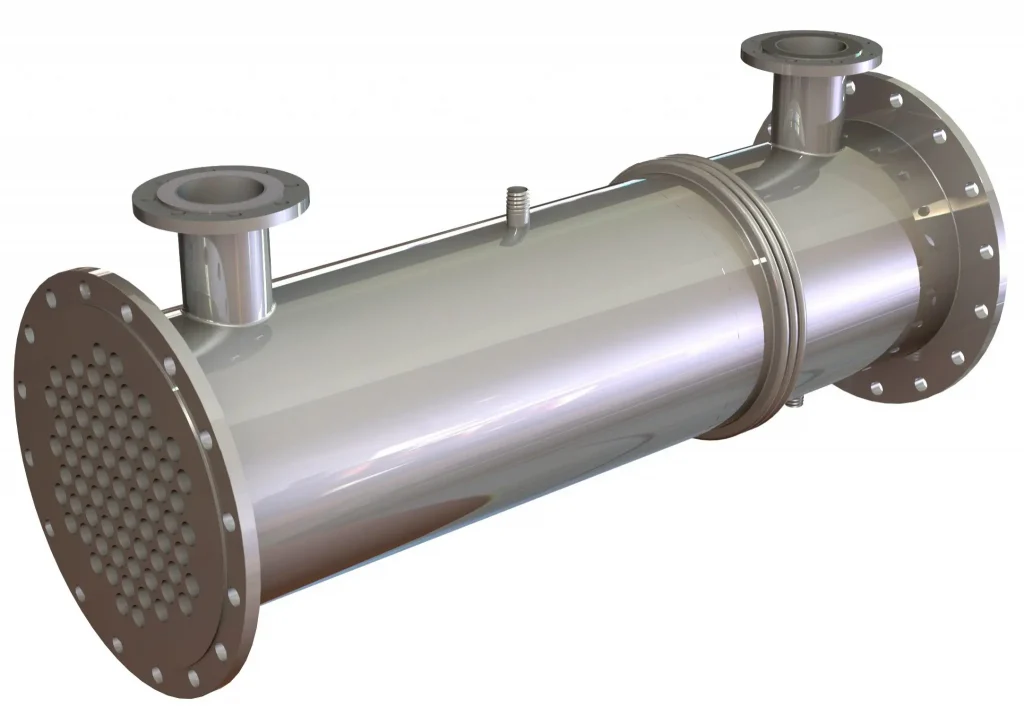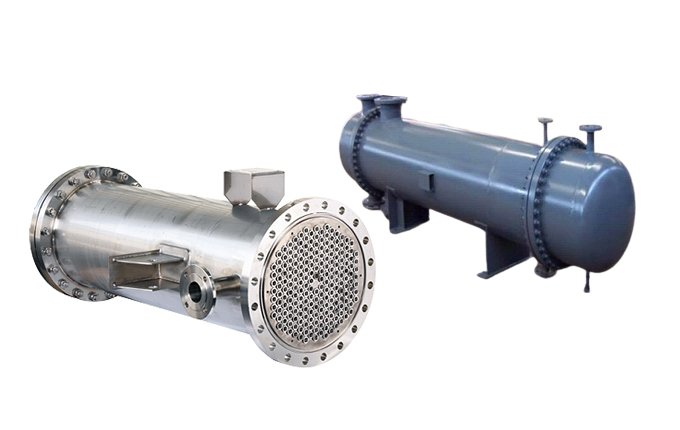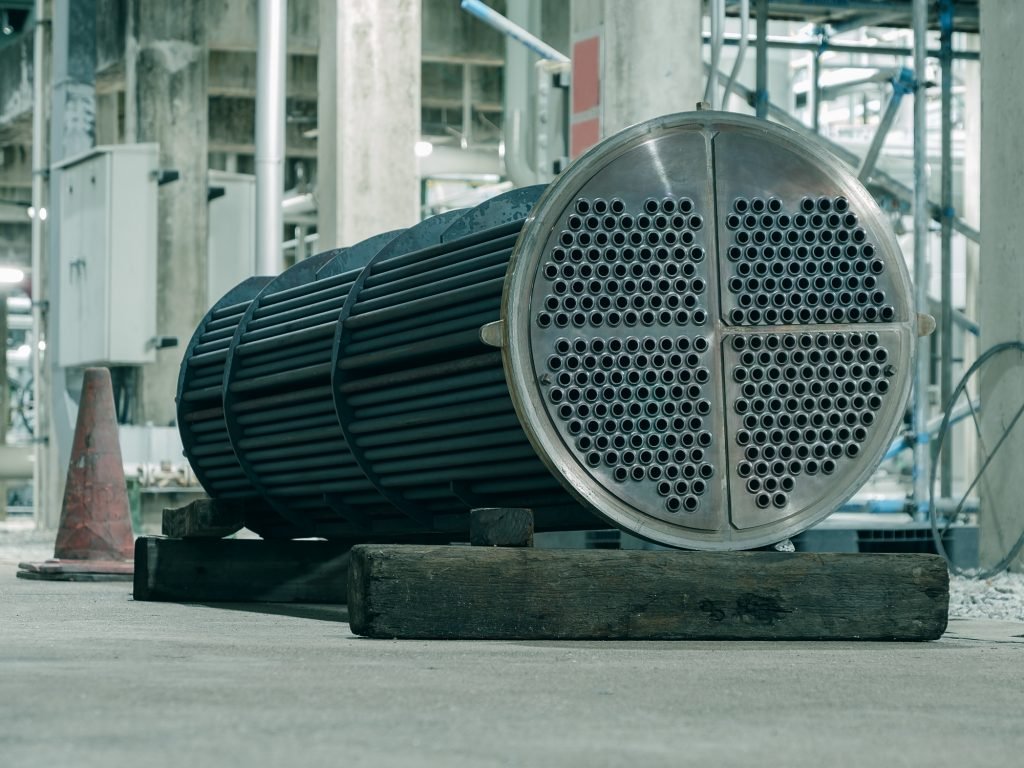Heat Exchanger –
A heat exchanger is a system used to transfer heat between two or more fluids. Heat exchangers are used in both cooling and heating processes. The fluids may be separated by a solid wall to prevent mixing or they may be in direct contact. They are widely used in space heating , refrigeration , air conditioning, power stations, chemical plants, petrochemical plants, petroleum refineries, natural-gas processing, and sewage treatment. The classic example of a heat exchanger is found in an internal combustion engine in which a circulating fluid known as engine coolant flows through radiator coils and air flows past the coils, which cools the coolant and heats the incoming air.

ADVANTAGE –
. Compact tubular heat exchanger
. Long running times due to turbulent flow
. Very low maintenance costs, minimum spares requirement
. Higher heat transfer coefficient (2-3 times) results in reduction in heat exchanger area upto 50%
. Fouling is minimized due to turbulence created by eddies at the periphery or tube wall
SPECIFICATIONS –
. Heating a cooler fluid using a heating from a hotter fluid.
. Cooling a hot fluid by transferring all its heat to the cooler fluid.
. Boiling a liquid using heat from hotter fluid.
. Boiling a liquid while condensing hotter gaseous fluid.
. Condensing a gaseous fluid by means of a cooler fluid.
APPLICATIONS –
. Crude oil cooling:
It works as a heat exchanger between crude oil that goes into the furnace with a residue that goes into the cooler so that the heat contained in the residue can be utilized to raise the temperature of the crude oil and the load of the furnace becomes lighter. The type of HE used is Shell and Tube Heat Exchanger, which consist of 3 pieces arranged in series.
. Cooler :-
One side of the flow is a process fluid that will be cooled without phase change. Cooling media is from utilities such as cooling water or air (without phase changes). The cooler functions to reduce the temperature or cool the oil products that come out of the fractionation column, stripper column, heat exchanger or condenser with water as a cooling medium to the desired temperature without any phase changes.
. Condensor :-
Equipment used to reduce the temperature of the vapour to the liquid temperature by leaving the heat to another fluid. One of the streams is a fluid (vapour) to be condensed, usually, steam from the top of the distillation column or fractionation. Cooling media is from utilities such as cooling water or air (without phase changes). The condenser serves to condense the vapour out of the top of the fractionation column.


